
Mongolia Through Fresh Eyes: An Expedition Leader’s Firsts Across the Gobi
Hailing from Oman, Swithun is one of Nomadic Road’s newest expedition leaders. On the Trans Gobi Mongolia expedition, he saw, felt, and did many things for the very first time — from spotting double-humped camels to hiking otherworldly canyons. This Mongolia photo essay captures those firsts, the landscapes, and the moments that left him awe-struck.
Before joining his first Nomadic Road expedition, Swithun was no stranger to the off-road world. Based in Oman, he has “off-roading in his blood.” Over the past few years, he has grown a local off-road group from just four friends to over 150 members, spending weekends carving out routes through Oman’s deserts, mountains, wadis, and beaches.
.jpg)
“It’s what I love to do,” he says. “We’ve built a community around it. We even have a road trip planned from Oman to Jordan this December.”
Joining Nomadic Road was a natural next step for him. He wanted to leverage that passion and scale it globally. The Trans Gobi Mongolia expedition would be his first taste of leading in one of the most remote corners of the world.

And while the trip served as his orientation, it was also Swithun’s very first time in Mongolia: a landlocked, wildly unpredictable country that consistently defies expectations.
This is Mongolia through fresh eyes, as experienced by Swithun — a journey told through his many “firsts.”
The Gobi Desert Comes Alive
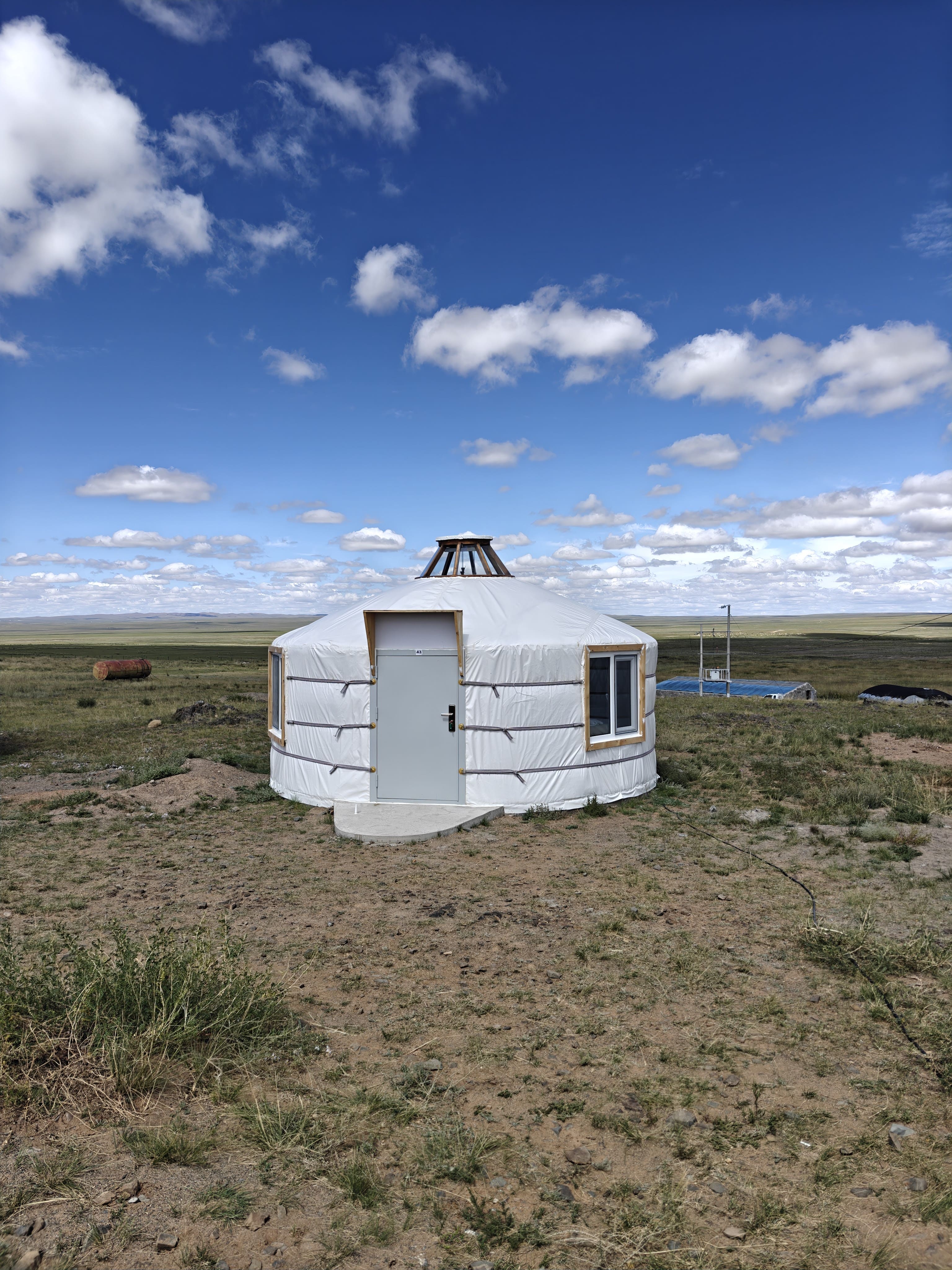
In Mongolia, there’s much to marvel at, and this doesn’t exclude the homes locals call home. Even today, more than half the country’s population lives in gers — structures built from wooden lattice and poles, tied with horsehair rope, and covered in several layers of felt made from animal hides. “I had never seen a ger before,” Swithun says. “I was amazed! I was like wow, this is different, but nice! It feels so cosy.” On the Trans Gobi Mongolia expedition, the convoy spends several nights in these earthy, nomadic homes, meeting with life in the Gobi Desert, as it has existed for centuries.
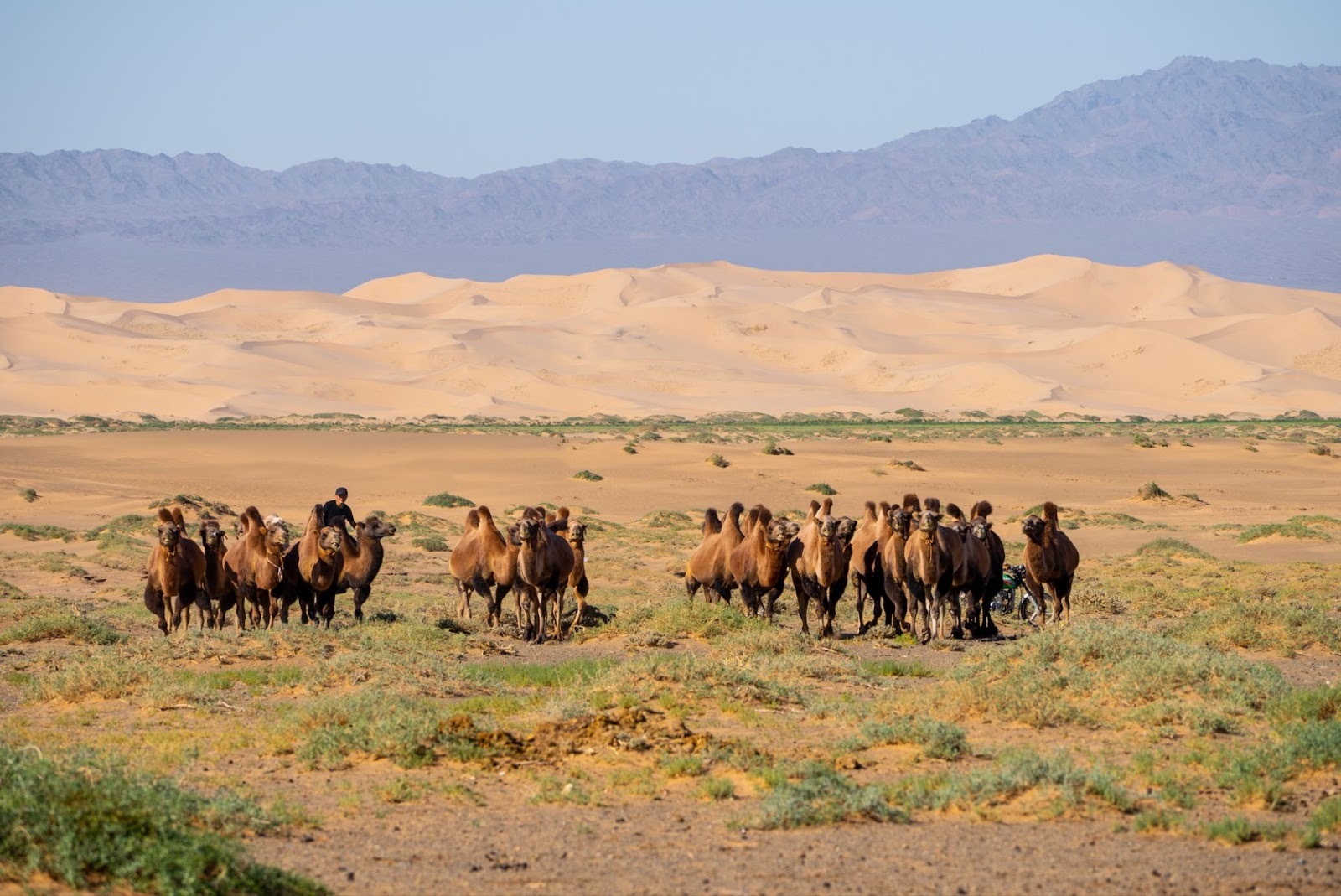
One doesn’t usually associate Mongolia with wildlife, but its harsh, arid land is home to creatures tough enough to survive extremes. On day two of the expedition, the convoy came face-to-face with one of the most iconic: the Bactrian camel.
With two fat-storing humps, these camels can go long stretches without food, built to thrive where few could. “We were literally 10 meters away from the camels,” Swithun says. “I’ve seen camels in the Middle East almost every time I get out of the city, but to see a double-humped one was something else.”

Overlanding across Mongolia means surrendering to the sheer scale of the land. On the third day, the convoy reached their campsite, and the vastness hit Swithun like a truck. “It was SO amazing! We were on a hill overlooking an 80-kilometre stretch of dunes, with rugged mountains on either side,” he says.
Oases, Plateaus, and Starry Nights

In landscapes where Mother Nature calls the shots, things can turn quickly. The group had just finished taking in the view when they saw rain gathering in the distance and heading straight for them. “The wind picked up so fast, 2-3 tents almost flew off,” Swithun recalls. After 30 minutes of chaos, the skies cleared to reveal one of the expedition’s most magical moments — a perfect double rainbow stretching across the empty steppe. “It was like God had put it there just for us,” he says. “There was no one around for miles. You could literally go and touch the pot of gold… it was right in front of us.”

The fifth day of the Gobi Desert adventure pushed the convoy deeper into Mongolia’s raw terrain, through bumpy dirt tracks and dried riverbeds. “Back home in Oman, we call these ‘gargarahs’ — the kind of roads that shake the whole car until everything’s rattling,” Swithun laughs. Eventually, the track climbed onto a vast plateau. At the edge, the world opened up, revealing a massive valley below, and across it, a range of wind- and rain-carved formations. “Venky had briefed us about the campsite, but when you see it, it’s like being on Mars,” Swithun says. “The mountain range looked like compacted sand, almost otherworldly. It even reminded me of Peru.”

Day six brought yet another first for Swithun. A true desert oasis. “You see this brown, barren land, and in the middle of nowhere it just turns green,” he recalls. From a cliff above, the group could trace the entire riverbed, its straight walls cut deep into the earth. “You can tell where the water has carved its path over the years. When it rains, it must be incredible to watch,” Swithun says.

Camping on the Trans Gobi Mongolia expedition means trading creature comforts for something far rarer — nights under skies so clear they feel impossible.
“It was so scenic! You have these flat mountains next to you, and you look up and see the Milky Way with your naked eye,” Swithun says. “You don’t need a lens or special camera. That’s so rare today, with all the light pollution everywhere."
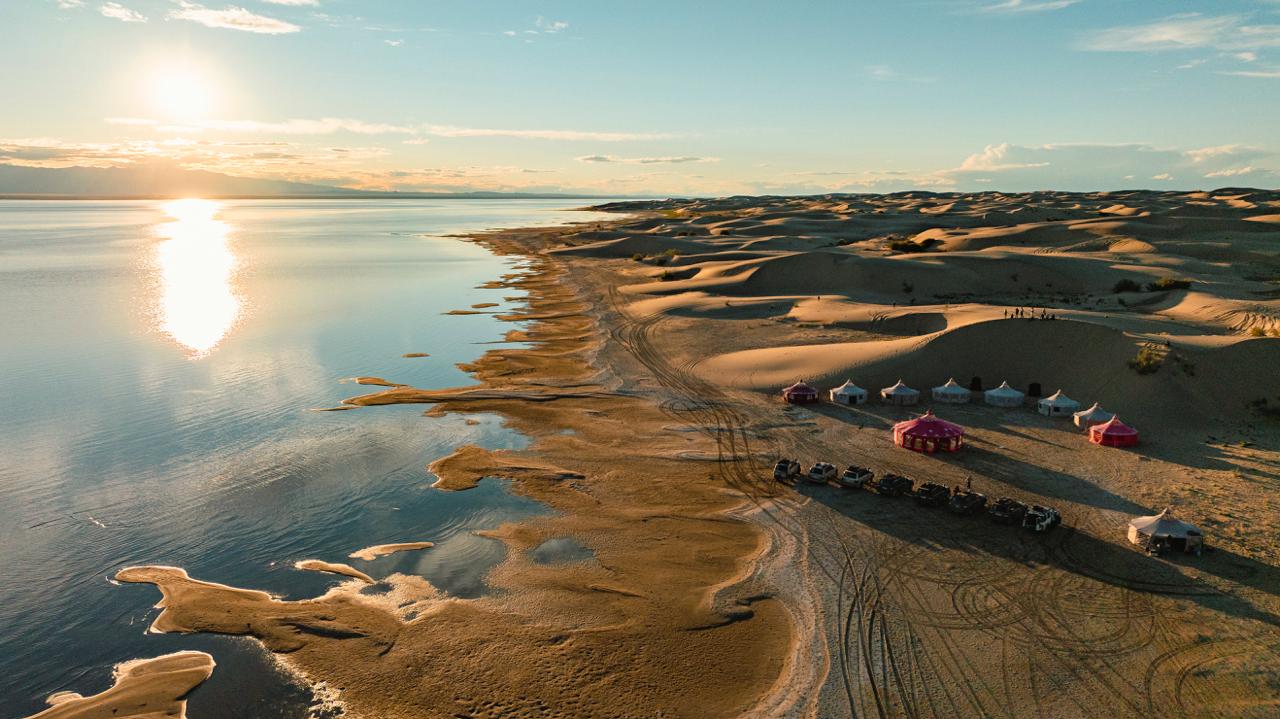
Beyond its dunes, lakes, and steppes, Mongolia hides landscapes that feel almost otherworldly. On day six, the convoy reached Khermen Tsav — a multi-coloured canyon carved by centuries of wind and rain — and set out on a short hike. It’s one of the best places to visit in Mongolia. Swithun would agree.
“We were walking between the cliffs, something I’d never done before,” Swithun says. “When the wind blew, it made this soft whistling sound through the rock formations. A bit spooky if you’re alone, but amazing with the whole group there.”
The Many Quirks of Life in the Gobi Desert

There’s such a thing as grocery tourism, and on the Trans Gobi Mongolia expedition, it becomes part of the adventure. Stocking up on snacks and supplies is a ritual between long stretches of overlanding and remote camping. “We moved to the next town, looking for a supermarket to stock up,” Swithun says. “It was so funny; there was one on almost every corner, but since it was Sunday, everything was shut. We were walking around aimlessly until we found a decent one.” Inside, he found what might be Mongolia’s largest beer bottle. “I had to take a picture… it was enormous, at least two or three times the size of a vodka bottle!”
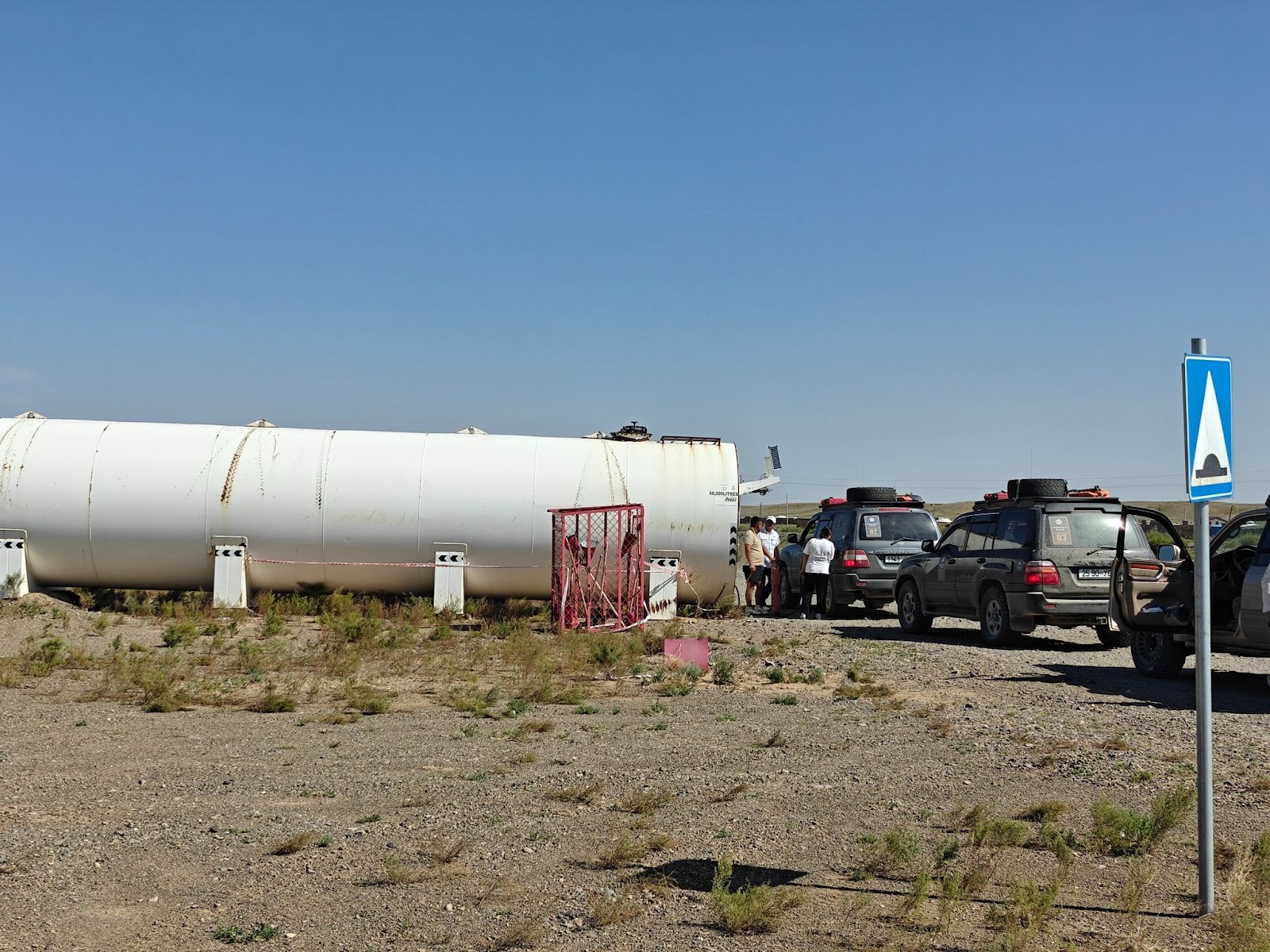
You simply never know what to expect in Mongolia. Even something as routine as refuelling becomes a cultural experience here, and serves as a reminder of how differently the world operates in remote places. “It was more of a fuel container than a station,” Swithun recalls. “Just a long cylindrical tank with a single pump on one end with zero safety, no shade, nothing.”
Mongolia imports most of its fuel from Russia, and shortages are common, particularly during the summer. “In small towns, you might see five or six stations, but only one open. Luckily, they filled all our tanks that day.”

Mother Nature in Mongolia is both bold and unforgiving, but also a trickster. On the way to Altai, the group stopped by a lake that seemed to appear out of nowhere.
“You’re driving and it’s completely flat,” Swithun recalls. “We saw the lake ahead of us, but when we looked to the right, there was another ‘lake’ that wasn’t a lake at all. A perfect mirage. For a second, I thought my eyes were playing tricks on me until Venky confirmed it over the radio.”
Naadam, Antelopes, and Majestic Eagles

At the tail end of the Gobi desert adventure, the convoy experienced a taste of Mongolia’s celebrated Naadam festival, which is a lively mix of wrestling, horse racing, and archery. For Swithun, the highlight wasn’t watching, but taking part.
“They told me I had to wrestle with the Mongolian wrestlers to prove myself as part of the Nomadic Road team,” he recalls. “Before I went on, Venky bet I wouldn’t last five seconds.”
Once on the sand, he quickly figured out his opponent’s strategy and kept adapting. “I surprisingly lasted 40 to 50 seconds!”

Mongolia’s wildlife isn’t limited to Bactrian camels. On this morning drive, with snow-capped peaks adorning the horizon, the convoy spotted something truly astonishing. “In the distance near the lake, we saw antelopes — some of the fastest in the world, running with their heads down,” Swithun recalls. “It was surreal. These little blobs were hopping and sprinting toward us at 60–80 km/h. They were outrunning us!”

On the way to meet Mongolia’s famed eagle hunters, the convoy took a scenic route past snow-capped peaks and shimmering lakes. Then they spotted him — a rider on horseback, an eagle perched proudly on his arm. “I was like WOAHHH! To see a full-grown eagle just meters away was unbelievable,” Swithun says.“But even more striking was the hunter himself. He had a few scars on his nose and face, probably from his eagle buddies. He wasn’t like anyone I’d seen before.”
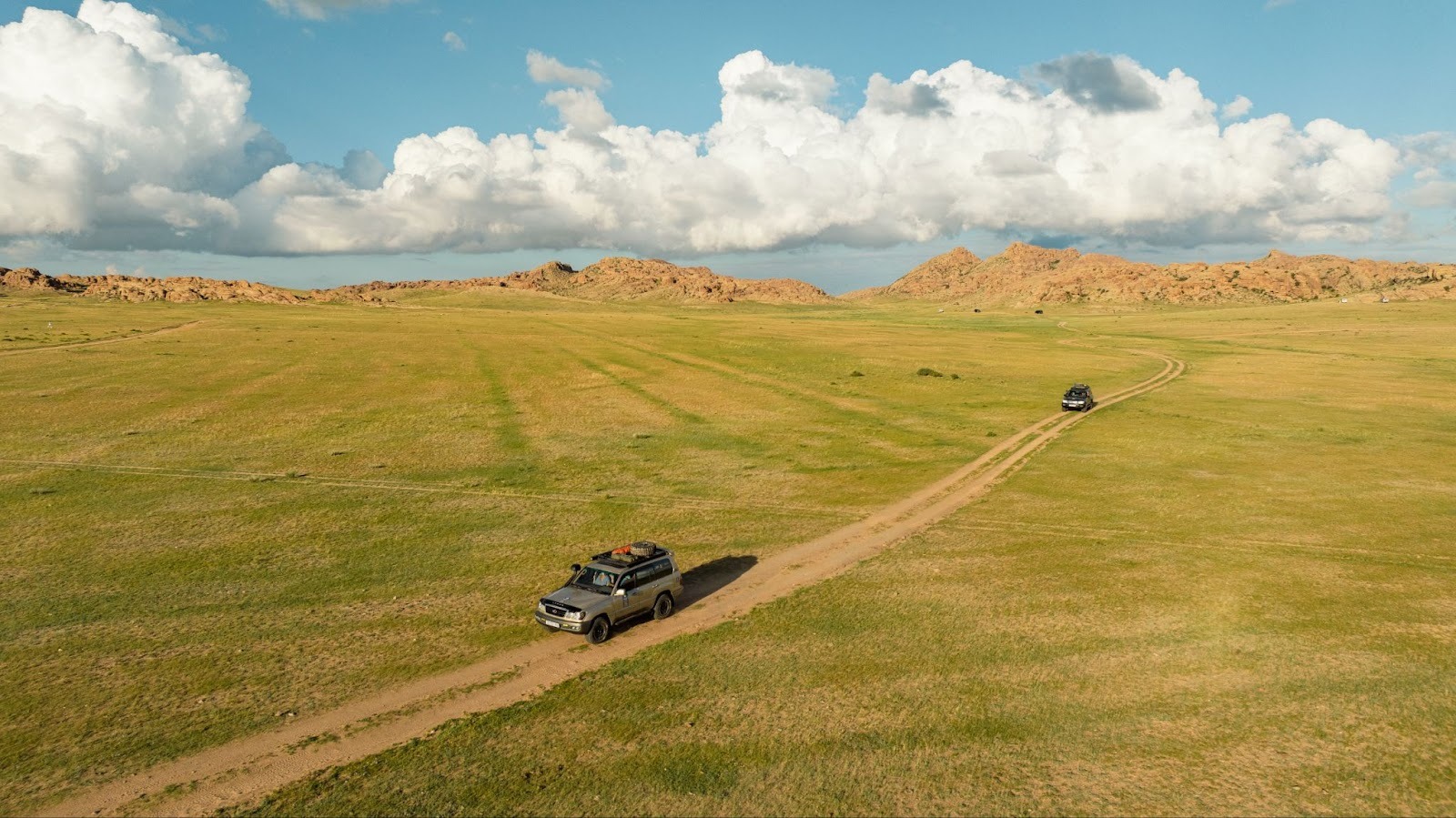
Now a part of the Nomadic Road team, many adventures lie ahead for Swithun. More firsts, awe-inspiring moments, and unforgettable stories await — all part and parcel of life on the Nomadic Road.
RELATED STORIES
%20(1).jpg)
A Rain-Soaked Desert? It’s All Possible on the Kalahari Expedition

We Went Looking for Adventure, but Mongolia Gave Us Much More


